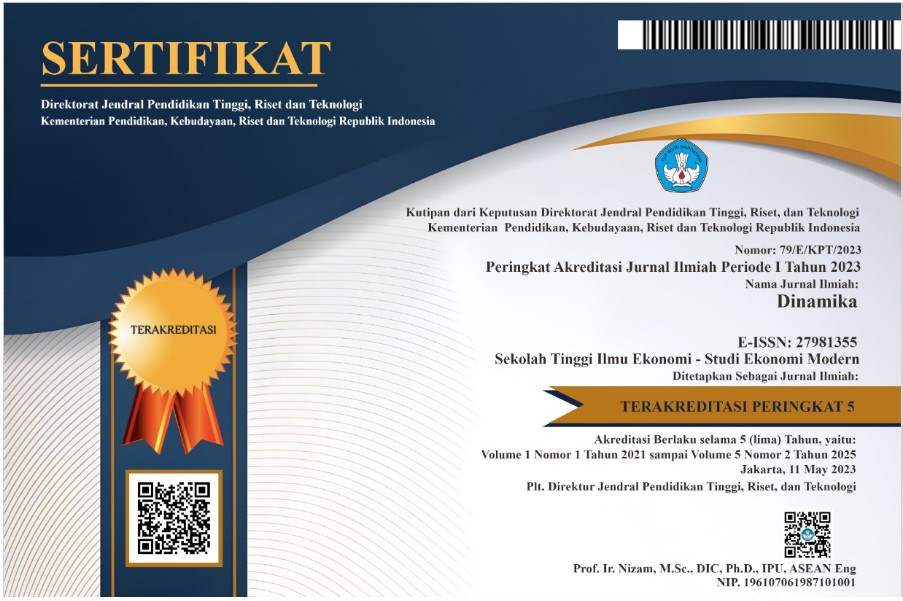ANALISIS LINGKUNGAN INTERNAL DAN EKSTERNAL Studi Kasus : PT. Intan Periwara
DOI:
https://doi.org/10.51903/pgc2sn34Keywords:
Analisis Lingkungan Eksternal, Analisis Lingkungan internal, Konteks BisnisAbstract
PEST (Political, Economic, Social, and Technological Analysis), which examines aspects of Indonesia's macro environment (economic, technological, political, legal, and socio-cultural), is a component of external environmental analysis. The second external environment study is a competitive pressure model that outlines five circumstances: the bargaining power of suppliers, competition from current competitors, threats from new competitors, and threats from substitute goods or services. Context diagrams are used in internal environment analysis to illustrate how systems communicate with external parties involved in an organization's business. The relationship between the internal system and the external entity of the PT can be explained by a context diagram.
This diagram visually illustrates the interaction between the system and four main external groups: printers, authors, representatives, and buyers. The buyer group is divided into two major segments, namely the general public and students from kindergarten to high school levels, which reflects the demographic diversity reached by PT in its operational activities.
References
[1] David, F. R. 2004.Manajemen Strategis: Konsep, Edisi Kesembilan, PT Index, Jakarta,
[2] HM Jogiyanto, 2005. Sistem Teknologi Informasi. Ide Dasar, Teknologi, Aplikasi, Pengembangan, dan
[3] Manajemen dalam Pendekatan Terintegrasi. Penerbit Andi, Yogyakarta, Edisi II.
[4] Kotler, P., dan Armstrong, G. (1997). Dasar-Dasar Pemasaran, Prinsip-Prinsip Pemasaran, Edisi 7, Edisi
Bahasa Indonesia, Volume 1, diterjemahkan oleh Drs. Alexander Sindoro, Prenhallindo, Jakarta,
[5] Sofian, J. (2004), Pengantar Balanced Scorecard (Bagian 2),
[6] Hukum asuransi Indonesia. Bandung: Salamadani kasidi. 2010 manajemen resiko bogor: Ghalia
Indonesia.
[7] Husin, M. M., & Rahman, A. A. (2013). What drives consumers to participate into family takaful
schemes? A literature review. Journal of Islamic Marketing
[8] Ibrahim, M. A., Nor, A. M., Rizal, R., & Raja, I. (2021). Contractor Intention on Contractors ’ All Risk
[9] Takaful Product in Malaysian Construction Industry Contractor In- tention , Con- Risk TakafulProduct
, Shari ’ ah Com- pliant. Journal of Accounting Research, Organization and Economics
[10] Rise, J., Sheeran, P., & Hukkelberg, S. (2010). The role of self-identity in the theory of planned
behavior: A meta-analysis. Journal of Applied Social Psychology.
[11] Caves, D. W., Christensen, L. R. & Diewert, W. E. (1982). The economic theory of index number and
the measurement of input, output and productivity. Econometrica: Journal of the Econometric Society,
50(6), 1393-1414.
[12] Ascarya & Yumanita, D. (2006). Analisis efisiensi perbankan syariah di Indonesia dengan Data
Envelopment Analysis. TAZKIA Islamic Finance and Business Review, 1(2), 1-32.
Downloads
Published
Issue
Section
License
Copyright (c) 2024 Dinamika: Jurnal Manajemen Sosial Ekonomi

This work is licensed under a Creative Commons Attribution-ShareAlike 4.0 International License.












